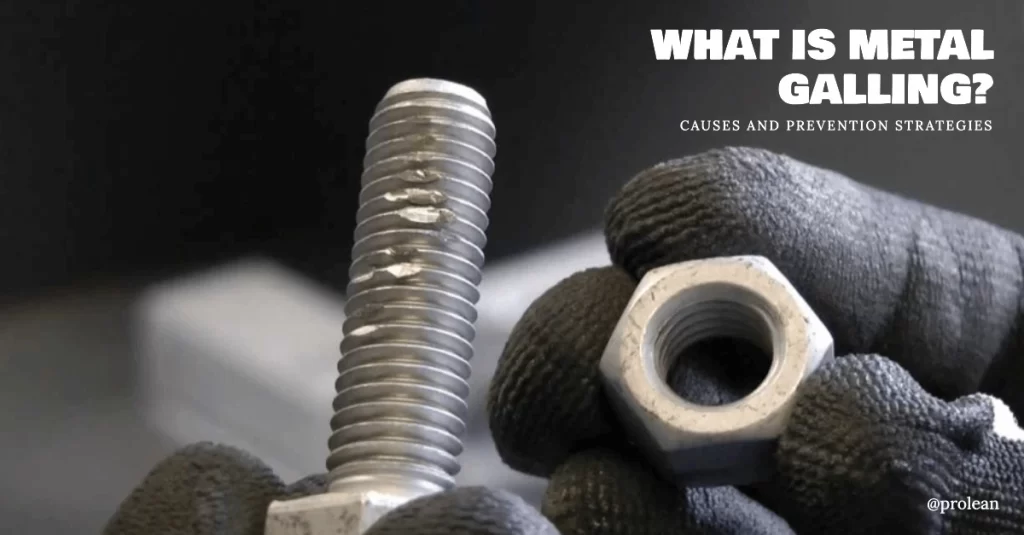
The sliding action of two metal parts causes wear on them called “Metal Galling”. However, it does not need continuous sliding action between surfaces over time, even a single misaligned contact can cause the galling. The galling defect causes the unwanted adhesion between the metal parts, which increases the defective rate and costly maintenance.
To prevent galling, it is essential to understand what is galling in metal, its causes, and anti-galling strategies. Continue reading, this article will include all of those elaborations.
What is Metal Galling? Definition and Phenomena
What is Galling in metal? It is characterized as adhesive wear between the metal surfaces due to high-pressure friction. The excessive friction pressure transfers the material from one sliding surface to another, which causes wear and adhesion. You can identify the galling area by identification of visual damages on the part’s surface, typically rough, raised, or torn appearances. So, any scratches, material degradation, or protrusion might suggest this defect.
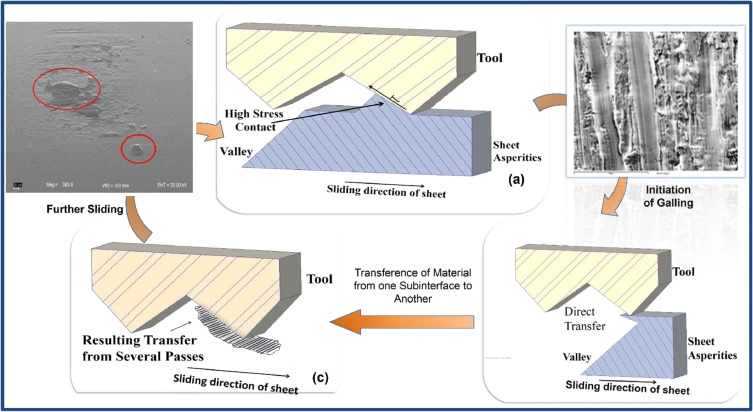
Galling mechanism/ Courtesy: ResearchGate
Metal galling is a microscopic phenomenon associated with localized plastic deformation in high contact points of the surface. As the oxide layers on the metal surfaces are worn away, the bare metal molecules come into direct contact. They form metallurgical bonds that help in minor material transfer or cold welding, resulting in raised lumps (called galls). These galls further increase the friction as the sliding motion continues.
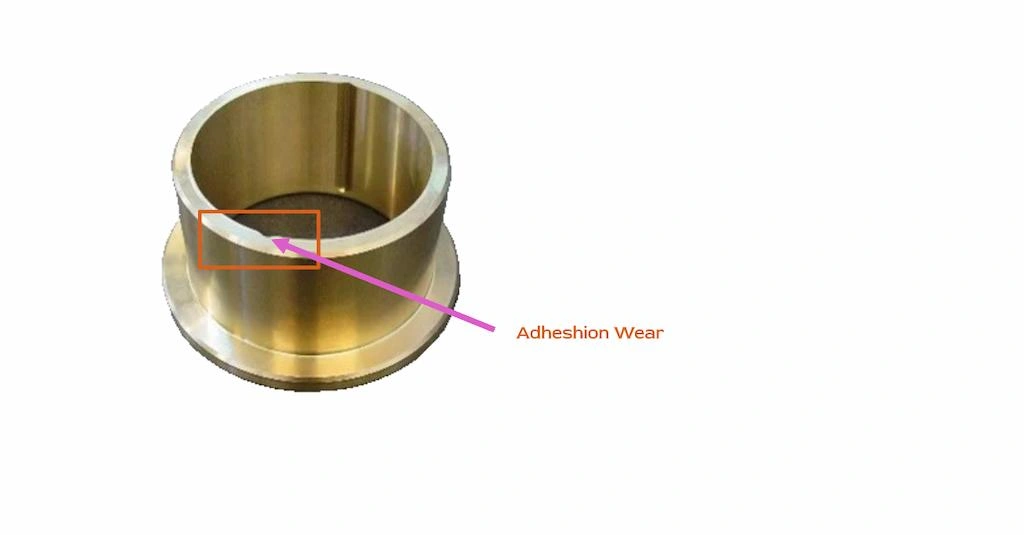
Adhesion wear on bearing
Moreover, galling is prone to all metal and alloys, especially sheet components like those produced with aluminum stamping process or other sheet metal forming items. It can be also observed in fasteners, hydraulics, bearings, etc.
Try Prolean Now!
Metal Galling Vs Abrasive Wear Vs Corrosion Wear
To understand metal galling better, let’s compare it with two other types of wear; Abrasive wear and Corrosion Wear. All of these wear are distinct due to their causes and formation mechanism.
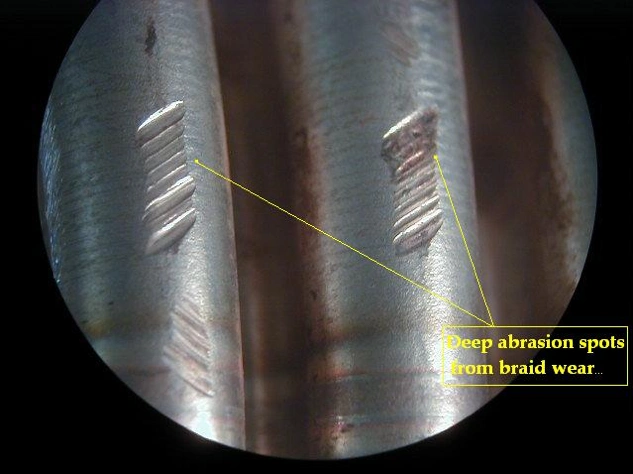
Abrasive wear
The table below outlines the key differences in short;
| Aspect | Metal Galling | Abrasive Wear | Corrosion Wear |
| Cause | Adhesive wear from metal-to-metal contact under load. | Hard particles scrape or erode the surface. | Chemical reactions degrade the material. |
| Effects | Surface tearing and cold welding | Grooves, scratches, or surface erosion. | Rusting, pitting, or uniform material loss. |
| Conditions | High pressure, sliding, and insufficient lubrication. | Presence of debris or abrasive particles. | Exposure to moisture, salts, or chemicals. |
| Prevention | Lubricants, dissimilar metals, or surface coatings. | Harder materials, wear-resistant coatings. | Corrosion-resistant alloys, protective films. |
| Affected Applications | Bearings, threads, and hydraulic components. | Tools, conveyor belts, and grinding systems. | Marine structures, pipelines, and outdoor equipment. |
What Are the Causes of Metal Galling?
The primary reason behind the metal galling is the friction between two or more contacted metal parts, typically the increased friction force under high pressure. However, the friction can be the result of several independent causes, all leading to galling in metal surfaces. This includes compatibility of material pairing, lack of lubrication, excessive stress on the sliding parts, surface roughness, etc.
Let’s discuss some key causes in brief;
Material Composition: Sliding of similar materials with the same metallurgical properties produces heat and softens the material for microscopic transfer from one surface to another. So, this transfer gets welded on the second part and results in material galling.
Lack of Lubrication: The lack of lubrication between rotating or sliding surfaces increases the direct contact between material molecules, which intensifies the localized heating and causes the galling.
Excessive Stress: The high loads or contact pressure allows for higher interaction between the surfaces and increases the local stress. This promotes the galling, especially in fastening components.
Surface Finish Quality: The rough surface finishes facilitate more contact points two or more parts are sliding or moving, increasing the friction and so the galling.
Thermal Effects: Increased or fluctuating temperatures are another cause. They accelerate, lubricant degradation, deformation, and adhesion
Environmental Causes: The corrosion on part’s surfaces and operation in abrasive environments causes friction and wear.
These causes signify that the overall quality of manufactured parts and assembly considerations impact the galling in metal parts. Meanwhile, some causes are related to the handling and operations.
How to Prevent Galling? Six Practical Strategies
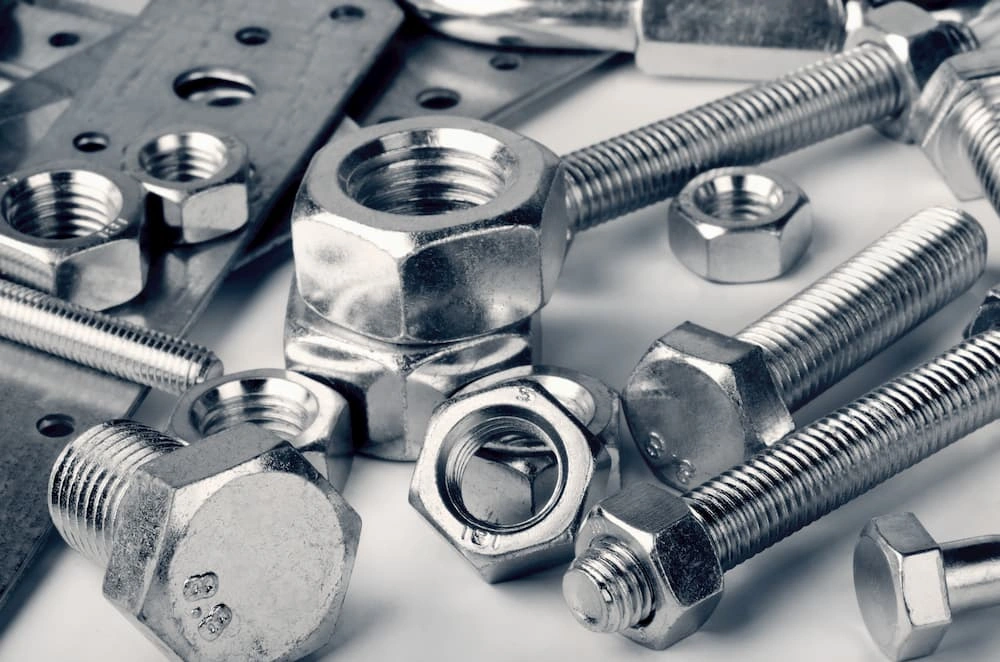
Sprayed fasteners
After understanding what is galling in metal and its causes, let’s move on to prevention actions or strategies, from the right material selection to additional coating on the part’s surface.
- Avoid Similar Materials
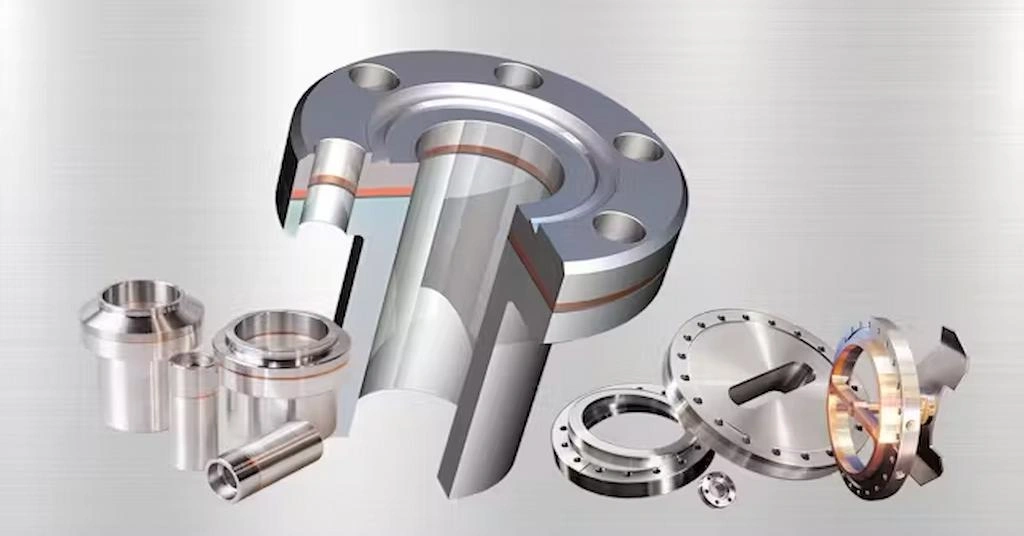
Pairing of dissimilar metals
Parts with the same material accelerate the material transfer and cold working, whereas distinct materials give the best anti galling properties. So, check the metallurgical properties of sliding parts and ensure they have distinct structures. For instance, using one copper and another brass part can be the best solution rather than a similar composition. You can read the metallurgical differences of Brass Vs Copper here. Subsequently, aluminum and steel can be another compatible pair.
- Lubrication between Surfaces
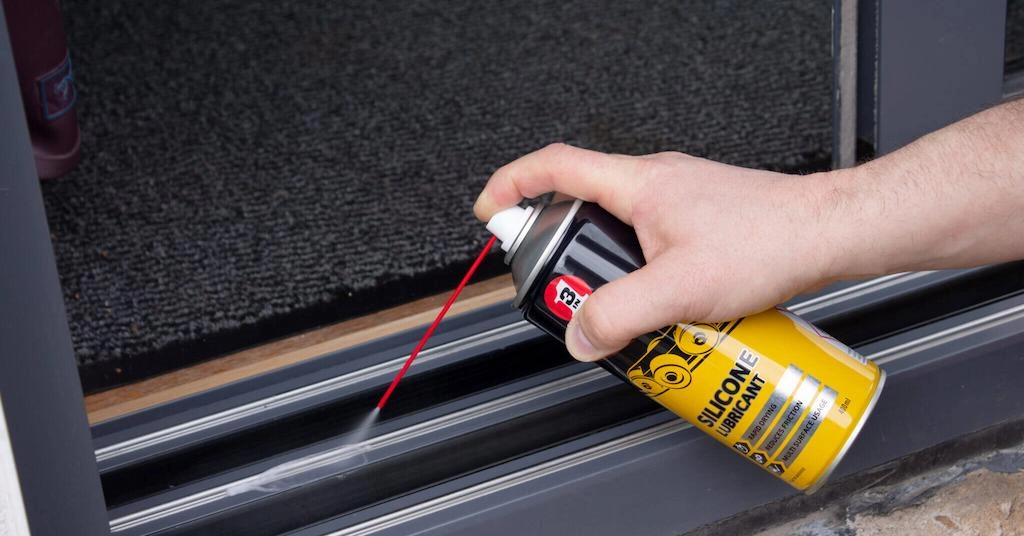
Lubricating the sliding section of a rack
You can apply lubrications containing anti-seize elements like nickel and molybdenum disulfide. Lubrication provides a barrier between contact surfaces and reduces friction. Consequently, solid lubricants like PTFE can perform better in some conditions.
- Apply Surface Coating
One of the effective strategies in preventing metal galling is coating the surfaces, which acts as a physical barrier and reduces interaction. To reduce friction, it is also essential to have a smooth finish of the coating layer.
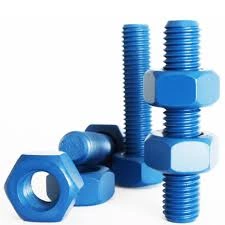
Anit galling coating
Titanium nitride, zinc, and phosphate are a few examples of coating materials for anti galling, which can be applied with electroplating or electroless plating. Additionally, you can apply vapor deposition of AlCrN or TiAlN for minimal risk of adhesion.
If you are more interested, read electroplating vs anodizing, two methods that can be used to prevent metal galling.
- Control Load and Contact Pressure
Whether they are fasteners, bearings, or hydraulic pistons, avoid overloads and high contact pressures. Additionally, excessive preloads can also increase friction. To ensure this, use calibrated tools, consider lubrication, and digital control systems.
- Consider External Factors
Apply necessary finishes and consider the operating variables if you are using metal parts in harsh environmental conditions such as marine, acidic, humid, high-temperature, and abrasive environments. You might also need to consider the material choices in such conditions.
- Periodic Maintenance
Clean debris, contaminations, and corrosion regularly. Then, reapply the lubricant. This ensures continuous operation without galling.
Which Metals are Susceptible to Galling?
Although all types of metal and alloys can go through the galling, some are more susceptible due to their favorable metallurgical properties. The metal parts with high ductility and formability are likely to suffer from galling, such as aluminum, stainless steel, and austenitic steel. Additionally, metal that develops oxide layers can also increase the risk of galling.
Aluminum Galling
Aluminum is a relatively soft metal with high ductility, so the material tends to wear and work hardened easily. Especially, two moving components with aluminum are at high risk. Thread, fasteners, and door sliders are some examples.
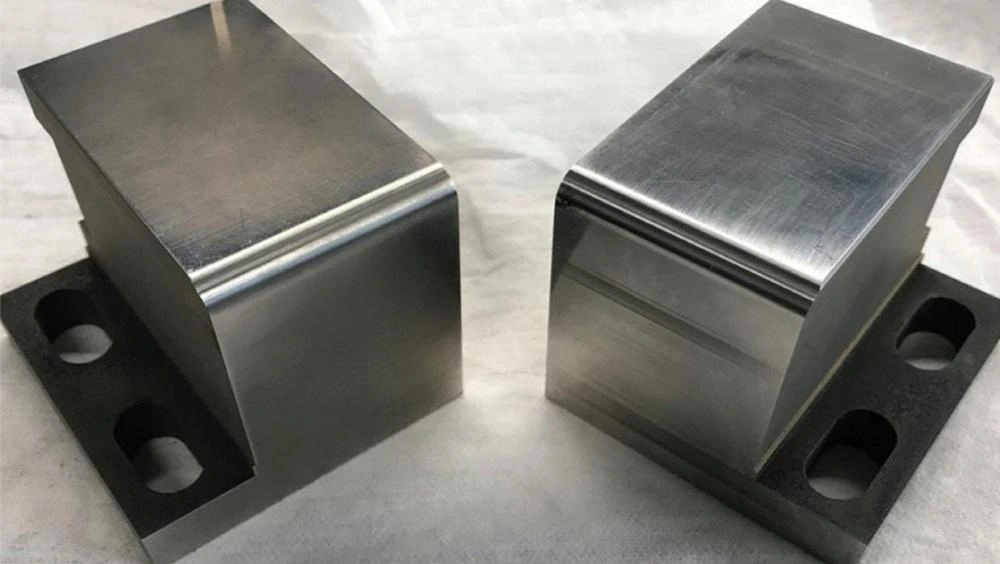
Galling in aluminum stamping
To prevent aluminum galling, reduce the pressure and apply lubricants. You can also apply anodizing or other hard finishing.
Stainless Steel Galling
The austenitic grades of stainless steel are more susceptible to galling compared to others, 303, 304, 316, etc. The reason is their ductility and hork-hardening properties. Subsequently, the absence of a tough surface and the formation of self-passivating oxide layers further contribute to the galling effect.
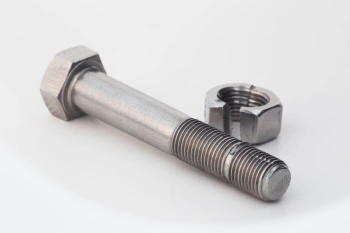
Galling on stainless steel fasteners
To prevent stainless steel galling, use dissimilar grads like 316 and 420, use PTFE surface coating, and apply suitable lubrication.
Titanium Galling
The high-stress handling capability and low thermal conductivity make titanium more prone to metal galling. Titanium grades have high friction coefficients that also promote material adhesion.
To prevent titanium galling, optimize the design for low-stress concentration, apply coatings like TiN, and lubricate the surfaces.
Try Prolean Now!
Summing Up
Formability, ductility, work hardening, and softness, are the key material properties that make the metal susceptible to galling. Meanwhile, surface fraction, high stress, misalignment, high temperature, and other operational conditions are the main causes behind this. However, you can adapt the appropriate strategies for prevention, such as applying lubrication, surface coating, and avoiding excessive stress.
Overall, optimizing the material pairing and surface treatment helps to tackle the metal galling. At ProlenTech, we can provide comprehensive surface finishing and anti galling coating services, whether they are CNC machined screws or fabricates sheet metal products. Additionally, our engineers and industry experts help you with material selection and appropriate lubricating solutions.
From bead blasting to anodizing and nitride coating, we have comprehensive surface treatment solutions. Upload your design and request a quote today!
FAQs
What is galling in metal parts?
Galling is an adhesive wear that occurs when two metal surfaces slide against each other under pressure, caused by microscopic friction- welding of the material at the contact points.
How to avoid metal galling between aluminum parts?
Appropriate lubrication, anodizing with a smooth finish, and paring aluminum with hard metal for sliding applications help to avoid the galling between aluminum parts.
Which applications are more prone to metal galling?
Applications related to sliding, fastening, and high-pressure contacts are likely to suffer from the galling. Some examples are bolts, nuts, machine parts, bearings, pistons, and valve gates.
What are the anti galling lubricants?
PTFE, Molybdenum Disulfide, anti-seize compounds, and dry film lubricants are some anti-galling lubricants. One common market lubricant for anti galling applications is WD-40®.


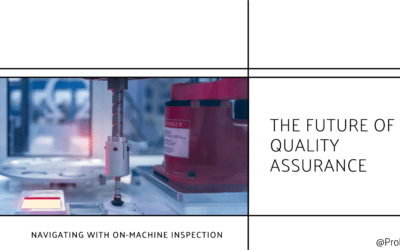
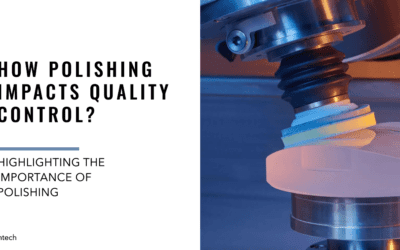
0 Comments